Aha! A NEW page full of hope
And you've just taken up most of it with your astrophotography!

I can see one white dot in that twilight sky. Is Mercury really that bright?
Abstract I
It is well known that Newton became convinced towards the end of his life that electricity played a vital role in the operations of nature. In the famous final paragraph of the Scholium Generale that he added to the second edition of the Principia, published in 1713, he wrote of “a certain most subtle spirit which pervades and lies hid in all gross bodies.” It was this active spirit that gave rise, he supposed, to the electrical attractions and repulsions that manifested themselves at sensible distances from most bodies after they had been rubbed, as well as to the cohesion of particles when contiguous. In addition, he surmised, it was the agency responsible for the emission, reflection, refraction, inflection and heating effects of light; and by its vibrations in “the solid filaments of the nerves,” it carried sensations to the brain, and commands of the will from the brain to the muscles in order to bring about bodily motion.
Abstract II
The basic principles of Newton’s laws, and related concepts of momentum and energy and their conservation, are derived from the electromagnetic theory. The electric and magnetic fields produced by an electric charge in uniform motion, as derived from Maxwell’s equations, are used to find the forces the charge would exert on another charge, as measured in two inertial frames. These force transformation relations in the two frames are extended to apply to any general physical problem involving force. The force transformation relations are then used, together with the space-time relations of special relativity, to derive Newton’s laws of motion applicable for velocity much smaller than the speed of light c(v << c), as well as to derive general expressions for mass, momentum and energy, applicable for any velocity v≤c. Further, the momentum or energy as expressed in one inertial frame, are linearly related to the momentum and the energy expressed in another inertial frame. This result, when applied to a closed system with no external interaction, proves the momentum and the energy to be conserved, based on the required force-transformation relations. Fundamental and philosophical implications of the results and derivations are discussed. The basic principles of invariant electric and magnetic charge, upon which all electromagnetic concepts of Maxwell’s equations are founded, are recognized to be complete, general and the fundamental origin of Newton’s laws, making mechanical or material principles theoretically secondary.
It is well known that Newton became convinced towards the end of his life that electricity played a vital role in the operations of nature. In the famous final paragraph of the Scholium Generale that he added to the second edition of the Principia, published in 1713, he wrote of “a certain most subtle spirit which pervades and lies hid in all gross bodies.” It was this active spirit that gave rise, he supposed, to the electrical attractions and repulsions that manifested themselves at sensible distances from most bodies after they had been rubbed, as well as to the cohesion of particles when contiguous. In addition, he surmised, it was the agency responsible for the emission, reflection, refraction, inflection and heating effects of light; and by its vibrations in “the solid filaments of the nerves,” it carried sensations to the brain, and commands of the will from the brain to the muscles in order to bring about bodily motion.
Abstract II
The basic principles of Newton’s laws, and related concepts of momentum and energy and their conservation, are derived from the electromagnetic theory. The electric and magnetic fields produced by an electric charge in uniform motion, as derived from Maxwell’s equations, are used to find the forces the charge would exert on another charge, as measured in two inertial frames. These force transformation relations in the two frames are extended to apply to any general physical problem involving force. The force transformation relations are then used, together with the space-time relations of special relativity, to derive Newton’s laws of motion applicable for velocity much smaller than the speed of light c(v << c), as well as to derive general expressions for mass, momentum and energy, applicable for any velocity v≤c. Further, the momentum or energy as expressed in one inertial frame, are linearly related to the momentum and the energy expressed in another inertial frame. This result, when applied to a closed system with no external interaction, proves the momentum and the energy to be conserved, based on the required force-transformation relations. Fundamental and philosophical implications of the results and derivations are discussed. The basic principles of invariant electric and magnetic charge, upon which all electromagnetic concepts of Maxwell’s equations are founded, are recognized to be complete, general and the fundamental origin of Newton’s laws, making mechanical or material principles theoretically secondary.
Attachments
Last edited:
I couldn't see a damn thing with my eyes, but the camera can work miracles. I think it gets to about Magnitude -1.5 or so. I was at the top of the bank, and the new lamposts were quite irritating.
On my way back from "The Theatre of the Seas" I went for a cup of chocolate at 'Spoons. There my friends dragged me to their table to explain the Great Planetary Conjunction, now all but over.
I showed them a few snaps of Jupiter, Venus and Mars, but explained it is all really a coincidence, and don't read too much into it.
What we all found interesting was my explanation (from Jim Al-Khalili that I linked to) that the European Robin has Quantum Entangled eyes that detect the direction of Magnetic North, but can also calculate its latitude from the vertical elevation of the field, which is different near the Poles than the Equator

See, the ancient mariners got it all wrong with their mere North pointing compass. They never guessed that a compass that points up and down could tell you something useful about latitude.
Problems of Longitude might need further study. All about Chronometers, isn't it? Though you can do things watching the moons of Jupiter and eclipses, as Lewis and Clark did on their expedition.
Nature has had Billions of years to solve these things. Makes us look dumb.
On my way back from "The Theatre of the Seas" I went for a cup of chocolate at 'Spoons. There my friends dragged me to their table to explain the Great Planetary Conjunction, now all but over.
I showed them a few snaps of Jupiter, Venus and Mars, but explained it is all really a coincidence, and don't read too much into it.
What we all found interesting was my explanation (from Jim Al-Khalili that I linked to) that the European Robin has Quantum Entangled eyes that detect the direction of Magnetic North, but can also calculate its latitude from the vertical elevation of the field, which is different near the Poles than the Equator
See, the ancient mariners got it all wrong with their mere North pointing compass. They never guessed that a compass that points up and down could tell you something useful about latitude.
Problems of Longitude might need further study. All about Chronometers, isn't it? Though you can do things watching the moons of Jupiter and eclipses, as Lewis and Clark did on their expedition.
Nature has had Billions of years to solve these things. Makes us look dumb.
And a minor surprise. I noticed a little star cluster south of Sirius. It is M41, the Little Beehive Cluster. Feynman says Star Clusters show us Gravity at work.
View attachment 1428500
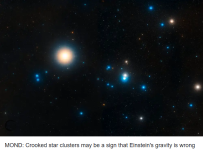
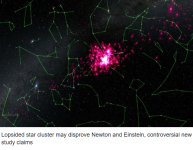
Attachments
Aha! It's a new page now. It wasn't when I replied to your post (at least it wasn't on my laptop).
Your Robin reminded me of the term "Dip Needle Compass" so I 'Binged' it:

Held vertically,the needle represents the angle the Earth's magnetic field makes at the user's latitude.
At the Equator, the dip of the needle is zero.
The "Dip Needle Compass" is also known as the "Miner's Compass".

1920s Miner's Compass
And here's the explanation why: https://ethw.org/Dipping_Needle
Your Robin reminded me of the term "Dip Needle Compass" so I 'Binged' it:
Held vertically,the needle represents the angle the Earth's magnetic field makes at the user's latitude.
At the Equator, the dip of the needle is zero.
The "Dip Needle Compass" is also known as the "Miner's Compass".
1920s Miner's Compass
And here's the explanation why: https://ethw.org/Dipping_Needle
Last edited:
In full, “Stop telling God what to do with his dice”.
And I particularly like his quote, “Physics is not about how the world is, it is about what we can say about the world”.
Some people actually think that physicists are not aware of this!
And I particularly like his quote, “Physics is not about how the world is, it is about what we can say about the world”.
Some people actually think that physicists are not aware of this!
We have space.
We have counter space.
Looking at the space between matter will get one further.
Another crippling limitation: There is only Electro-motive force.
Electro-motive force, is one part of 'yin and yang'
it's inseparable other is Magneto-dielecticity.
Aether physics was silenced with the advent of Einsteinian philosophical limitations, (the first world war was the catalyst for the narrowing) this choked other avenues of needed research such as magneto dielectricity and aether drift. Or put another way nature was taken out of the 'equation'. This is the elephant in the room. True comprehension will suffer until this is overcome institutionally in todays scientific reductionist materialist stance.
We have woefully inadequate 'tools' to make sense of such phenomena, and as far as the last three decades has suggested to me,
the hopeful avenues are dumped by the wayside or lost to silence, due to the wayward wiles of finance/ commerce.
The pioneers of the balanced view that did not isolate nature will be for many a familiar if controversial list.
The truth leads to an inner approach, first. Not cutting and pasting regurgitating one sided theories.
Remember gravity has an opposite, levity.
No shocking/new facts will be brought to the table in this thread - at most (hopefully) some disruptive insights.
By the way, if you consider the structure of the atom as a self-referential development, you arrive at the following:
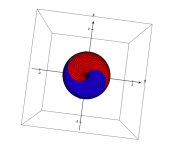
Existence being self-referential means that everything wraps into its opposite after a complete cycle and so, the macrocosm wraps into the microcosm, while both are actually the same thing but observed from a different frame of reference. Chaos theory and fractals imply the same thing.
Based on the math I derived a horn (profile) that gave decent simulation results:
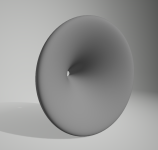
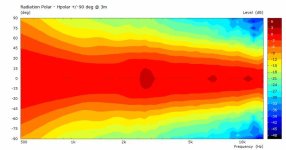
Last edited:
Ah, thankyou, @Galu. The Miner's compass looks quite useful to detect large bodies of magnetic Iron Ore. And there is some 1820 understanding of the vertical component of the Earth's magnetic field.
I am still reeling from the little Robin's application of some of these principles to navigate.
Does it have a two Qubit Quantum Computer in its head? What is a Quantum Computer? I personally am unsure, but Google and Microsoft seem greatly interested.
Far from suppressing innovative Science, I think we are always looking for INSIGHTFUL new ways to understand old problems.

Here Stevinus proves that Perpetual Motion Machines are impossible. Thus settling Centuries of debate.

Here, Jim Al-Khalili shows the right and wrong way to tie your shoelaces. Though what it has to do with Quantum Tunneling defeated me.

Here Paul Dirac discusses something to do with central forces and orbits. But I had never thought of it as a symmetry and antisymmetry problem.
https://physicsworld.com/a/paul-dirac-the-purest-soul-in-physics/
But then he was a Genius, whereas I am not.
BTW, Galu, I haven't forgotten that I am to look up that faint lightbulb problem in the Quantum Mechanics Double-Slit Experiment by Feynman. I shall do it today.
Best, Steve, and all that.
I am still reeling from the little Robin's application of some of these principles to navigate.
Does it have a two Qubit Quantum Computer in its head? What is a Quantum Computer? I personally am unsure, but Google and Microsoft seem greatly interested.
Far from suppressing innovative Science, I think we are always looking for INSIGHTFUL new ways to understand old problems.
Here Stevinus proves that Perpetual Motion Machines are impossible. Thus settling Centuries of debate.
Here, Jim Al-Khalili shows the right and wrong way to tie your shoelaces. Though what it has to do with Quantum Tunneling defeated me.
Here Paul Dirac discusses something to do with central forces and orbits. But I had never thought of it as a symmetry and antisymmetry problem.
https://physicsworld.com/a/paul-dirac-the-purest-soul-in-physics/
But then he was a Genius, whereas I am not.
BTW, Galu, I haven't forgotten that I am to look up that faint lightbulb problem in the Quantum Mechanics Double-Slit Experiment by Feynman. I shall do it today.
Best, Steve, and all that.
... shining a light on the slits to try and see the electron passing, and they only go through one slit or the other.
An interference pattern appears on the screen when electrons are not 'observed', but disappears when electrons are 'observed'.
I haven't forgotten that I am to look up that faint lightbulb problem...
Let's hope you can 'shine a light on' what 'observed' means in this situation!
Bamboozlement and Mysticism takes many forms, but you start to get alert to it after a while:

Notable Fraudsters include Fritjof Capra, now purveying Ecoliteracy in California:

The man below (actually Cyril Hoskin of Plympton, Devon) had never been near Tibet in his life:

And of course, the notorious million-seller Erich von Daniken who at least put a question mark after the title, the answer being a firm NO.

Now must re-read Feynman for Galu. Feynman seems a sensible chap.
Notable Fraudsters include Fritjof Capra, now purveying Ecoliteracy in California:
The man below (actually Cyril Hoskin of Plympton, Devon) had never been near Tibet in his life:
And of course, the notorious million-seller Erich von Daniken who at least put a question mark after the title, the answer being a firm NO.
Now must re-read Feynman for Galu. Feynman seems a sensible chap.
A rare double post from me, but listen up everybody.

I have made the ultimate sacrifice and turned off the football for 10 minutes to reread Feynman's Double Slit chapter.
The question was, if you dimmed or turned off the light and light detector near the slits, would the Electron (position then unobserved) resume its wavy momentum ways?
Feynman is a bit vague about it IMO. Says if the light gets very dim, which means the light particles get few, then electrons can slip by stealthily, which I suppose means the wave pattern resumes.
Increasing the wavelength (so less disturbance) of the light makes things worse too, since the wavelength is longer than the separation of the two slits, so you don't know which slit it has gone through.
To make it all even worse, you can have particle like things mixing with wavelike things, which makes 4 different options to me.
Maybe it is not the light that is dim, but me. Perhaps when all else fails, give up.
🙁
I have made the ultimate sacrifice and turned off the football for 10 minutes to reread Feynman's Double Slit chapter.
The question was, if you dimmed or turned off the light and light detector near the slits, would the Electron (position then unobserved) resume its wavy momentum ways?
Feynman is a bit vague about it IMO. Says if the light gets very dim, which means the light particles get few, then electrons can slip by stealthily, which I suppose means the wave pattern resumes.
Increasing the wavelength (so less disturbance) of the light makes things worse too, since the wavelength is longer than the separation of the two slits, so you don't know which slit it has gone through.
To make it all even worse, you can have particle like things mixing with wavelike things, which makes 4 different options to me.
Maybe it is not the light that is dim, but me. Perhaps when all else fails, give up.
🙁
Last edited:
Can't say I'm wise in the ways of forums, but I'll try to get the quoting thing sorted.
Aldebaran was the the last time I looked in that direction... (Astrophotography P276)
Aldebaran was the the last time I looked in that direction... (Astrophotography P276)
Last edited:
Perhaps when all else fails, give up.🙁
I read during my earlier Bing searches that "inelastic scattering" was involved in the observation of the electrons.
Now, "inelastic scattering" is what takes place in Compton Scattering when high energy photons scatter off electrons.
So I thought that perhaps electrons are observed using high energy photons. A scattered photon will be of a lower energy than an incoming photon, having transferred energy to the electron.
My simplistic hypothesis would be in accord with your notion of "shining a light on the slits to try and see the electron passing".
But then I found this (edited) information:
The demonstration that the interference pattern disappears when information about which slit the electron passes through has been named the which-way (or which-path) double-slit experiment.
The first experiments in this direction were carried out by preparing nano-slits and depositing a layer of amorphous material using modern nanotechnology tools on one or both of them.
Inelastic scattering in the material can be regarded as a dissipative process during the interaction, which is responsible for the localisation mechanism.
Note the mention of "inelastic scattering" - and a "dissipative process" is one in which energy is transformed from some initial form to some final form.
However, when I looked up "which-way detector" I found this: https://phys.org/news/2011-01-which-way-detector-mystery-double-slit.html
It mentions "nano-slits", "inelastic scattering" and the fact that "when the electron suffers inelastic scattering, it is localised, meaning that its wavefunction collapses".
The plot thickens!
Tangent alert!
The history of the search for small is fascinating, the essence of which, is as far as i could tell that the big machine that goes 'ping' was 'sold' to the bankers that rolled it. This required annihilating the specimen before being able to be placed into what became known as the electron microscope, despite the 'other guy' achieving a direct optical route of the finest quarz ever machined, magnifing 30,000 times whilst keeping the specimen alive, of course he was 'the bad guy' that 'had it all wrong'. His conclusions, if you can find them unmodified, redacted or blown apart by the opinion of those who have never looked through a microscope, are truly interesting. The interactivity of reflective light indexes a mind bogling parallel with electro static capacity. His conclusions focused on identifying the nature of disease.
The history of the search for small is fascinating, the essence of which, is as far as i could tell that the big machine that goes 'ping' was 'sold' to the bankers that rolled it. This required annihilating the specimen before being able to be placed into what became known as the electron microscope, despite the 'other guy' achieving a direct optical route of the finest quarz ever machined, magnifing 30,000 times whilst keeping the specimen alive, of course he was 'the bad guy' that 'had it all wrong'. His conclusions, if you can find them unmodified, redacted or blown apart by the opinion of those who have never looked through a microscope, are truly interesting. The interactivity of reflective light indexes a mind bogling parallel with electro static capacity. His conclusions focused on identifying the nature of disease.
My muddled mind was soothed by rewatching young Jim's explanation, though he uses bigger "atoms":
The muddlement comes from me having the detector "half-on" or "weakly-on" if you follow. That will lead to a superposition of the two patterns in my opinion.
He is talking about full ON or full OFF! And it's one pattern or the other. Interestingly the pattern is really changed by the photons in the detector. It doesn't matter if there is any observer like you to listen for the click.
On the interesting question of red supergiant Aldeberan in Taurus, I have last nights observation of two planets, Jupiter and Uranus, and essentially two star clusters, the nearer Hyades and the further Pleiades.

Uranus is bottom right.
But there is more under magnification, with a bit of spherical aberration for good measure:

Looks like a Hydrogen orbital, but that is Ganymede and fainter Callisto to the right.
The muddlement comes from me having the detector "half-on" or "weakly-on" if you follow. That will lead to a superposition of the two patterns in my opinion.
He is talking about full ON or full OFF! And it's one pattern or the other. Interestingly the pattern is really changed by the photons in the detector. It doesn't matter if there is any observer like you to listen for the click.
On the interesting question of red supergiant Aldeberan in Taurus, I have last nights observation of two planets, Jupiter and Uranus, and essentially two star clusters, the nearer Hyades and the further Pleiades.
Uranus is bottom right.
But there is more under magnification, with a bit of spherical aberration for good measure:
Looks like a Hydrogen orbital, but that is Ganymede and fainter Callisto to the right.
I am up with the Lark again, and my mind is refreshed.
I recall that Aldebaran at about 75 LY is in fact just a star like our sun going into the red Giant phase, not a Supergiant at all.
That problem that I and Galu were puzzling about is exactly the sort of thing Einstein got into trouble with his "Dicey" thought experiments. It's a wrong way of thinking.
I was thinking about how you actually calculate things with the Wave Function. This looks a bit fierce, so don't worry about it:

Let's look at the solution instead, which might be like what you see on the screen in Jim's double slit:

The thing to notice is that the particle is behaving like a sine or cosine in the well, and like an exponential outside it.
What function can have this magical dual nature?


Yes. The good old exponential function, beloved by dull designers of Loudspeaker crossovers!
In wave theory, you can add the real index of the exponential function tidily to the complex index, and the maths of them under differentiation is very tidy and easy.
Just add a few boundary conditions for continuity and we are actually there, and this is schoolboy mathematics:

You can then do things like Quantum Harmonic Oscillators or Quantum Tunneling, but it is really wavy sines and envelope exponentials all the way. 🙂
I recall that Aldebaran at about 75 LY is in fact just a star like our sun going into the red Giant phase, not a Supergiant at all.
That problem that I and Galu were puzzling about is exactly the sort of thing Einstein got into trouble with his "Dicey" thought experiments. It's a wrong way of thinking.
I was thinking about how you actually calculate things with the Wave Function. This looks a bit fierce, so don't worry about it:
Let's look at the solution instead, which might be like what you see on the screen in Jim's double slit:
The thing to notice is that the particle is behaving like a sine or cosine in the well, and like an exponential outside it.
What function can have this magical dual nature?
Yes. The good old exponential function, beloved by dull designers of Loudspeaker crossovers!
In wave theory, you can add the real index of the exponential function tidily to the complex index, and the maths of them under differentiation is very tidy and easy.
Just add a few boundary conditions for continuity and we are actually there, and this is schoolboy mathematics:
You can then do things like Quantum Harmonic Oscillators or Quantum Tunneling, but it is really wavy sines and envelope exponentials all the way. 🙂
Last edited:
this is schoolboy mathematics
Oh yeah?
Quantum Harmonic Oscillators
Quantum fields are just collections of harmonic oscillators.
I'm reminded of the three main representations of the harmonic oscillator as listed by your mentor John Baez: https://math.ucr.edu/home/baez/photon/enlightn.htm
1. The Schrödinger representation (or wave representation)
2. The Heisenberg representation (or particle representation)
3. The Segal-Bargmann representation (or phase space representation)
The first two representations are well known to students of quantum mechanics and are the basis of wave-particle duality in quantum field theory.
The phase space representation is less well known, but there's information in the following link, where a quantity in Segal–Bargmann space may be interpreted as a sort of "phase space probability density" of a particle: https://en.wikipedia.org/wiki/Segal–Bargmann_space
See also "phase space": https://en.wikipedia.org/wiki/Phase_space
Last edited:
When a Professor Paul Adrien Maurice Dirac was asked by a young student of his as to what field he should pursue in Physics, and this is true, he replied; "Anything but Quantum Field Theory. It is UGLY!"
I have been out in the muddy field again tonight, and nearly slipped down the bank in the dark, which amused my cronies at the Lord Palmy as I showed them my modest gleanings:

You can see my poetic intention here with Portsmouth City's symbol and motto "Heaven's Light our Guide".
I had given up on Mercury due to cloud low on the horizon.
"Bur soft! What light through yonder window breaks?" 🤔

Another equivocal certainty, one feels.

Tomorrow night, the Moon may present an even more charming aspect in the Great Planetary Parade. 🙂
I have been out in the muddy field again tonight, and nearly slipped down the bank in the dark, which amused my cronies at the Lord Palmy as I showed them my modest gleanings:
You can see my poetic intention here with Portsmouth City's symbol and motto "Heaven's Light our Guide".
I had given up on Mercury due to cloud low on the horizon.
"Bur soft! What light through yonder window breaks?" 🤔
Another equivocal certainty, one feels.
Tomorrow night, the Moon may present an even more charming aspect in the Great Planetary Parade. 🙂
You can see my poetic intention here with Portsmouth City's symbol and motto "Heaven's Light our Guide".
Nice one, Steve! 😎
The design of the symbol recalls the national flag of Turkey, and the badge adopted by King Richard I at the time of the Crusades.
In 1194 it was Richard I, aka Richard the Lionheart, who granted the Town of Portsmouth its first charter.
I read it here: https://www.welcometoportsmouth.co.uk/star-and-crescent-portsmouth-coat-of-arms.html
- Home
- Member Areas
- The Lounge
- Does this explain what generates gravity?